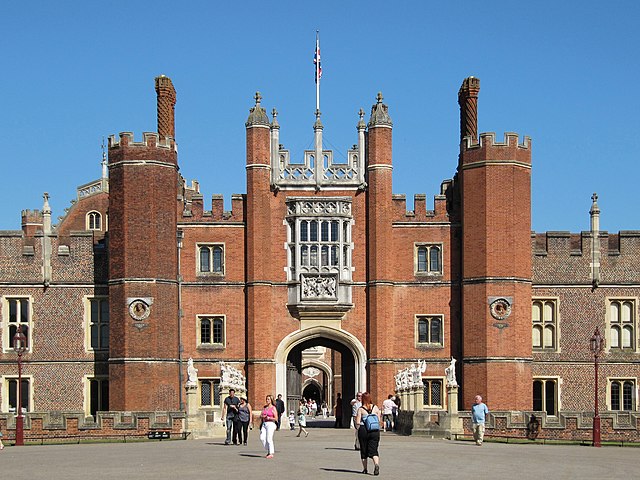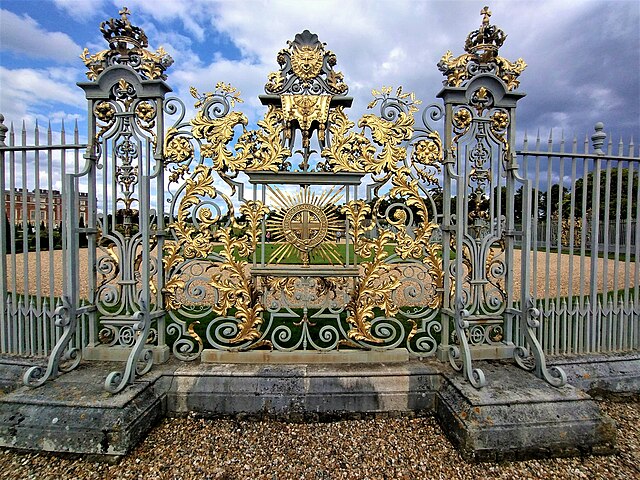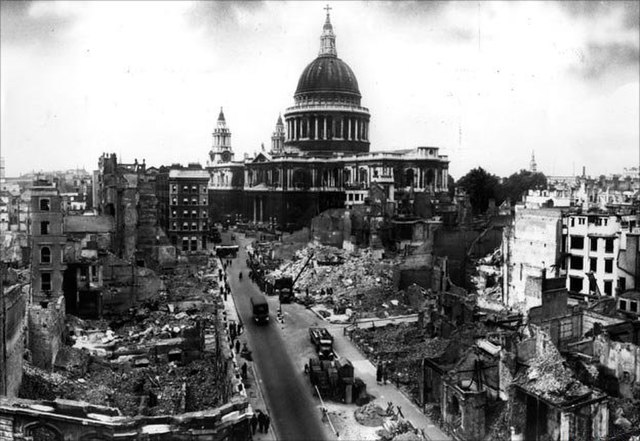Hampton Court Palace is a Grade I listed royal palace in the London Borough of Richmond upon Thames, 12 miles southwest and upstream of central London on the River Thames. Opened to the public, the palace is managed by Historic Royal Palaces, a charity set up to preserve several unoccupied royal properties.
The Tudor Great Gatehouse
Hampton Court Palace, with marked reference points referred to on this page. A: West Front & Main Entrance; B: Base Court; C: Clock Tower; D: Clock Court, E: Fountain Court; F: East Front; G: South Front; H: Banqueting House; J: Great Hall; K: River Thames; L: Pond Gardens; M: East Gardens; O: Cardinal Wolsey's Rooms; P: Chapel.
Decorative Tudor brick chimneys at Hampton Court Palace
Thames riverside gate, now closed. August 2023.
In the United Kingdom, a listed building is a structure of particular architectural and/or historic interest deserving of special protection. Such buildings are placed on one of the four statutory lists maintained by Historic England in England, Historic Environment Scotland in Scotland, Cadw in Wales, and the Northern Ireland Environment Agency in Northern Ireland. The classification schemes differ between England and Wales, Scotland, and Northern Ireland. The term has also been used in the Republic of Ireland, where buildings are protected under the Planning and Development Act 2000, although the statutory term in Ireland is "protected structure."
The Forth Bridge, designed by Sir Benjamin Baker and Sir John Fowler, which opened in 1890, and is now owned by Network Rail, is designated as a Category A listed building by Historic Environment Scotland.
WWII bomb damage advanced the move to preserve architecturally significant buildings.
100 King Street, Manchester, built 1935, listed Grade II* in 1974
The redundant Holy Trinity Church, Wensley, in North Yorkshire, is listed at Grade I. Much of the current structure was built in the 14th and 15th centuries.








